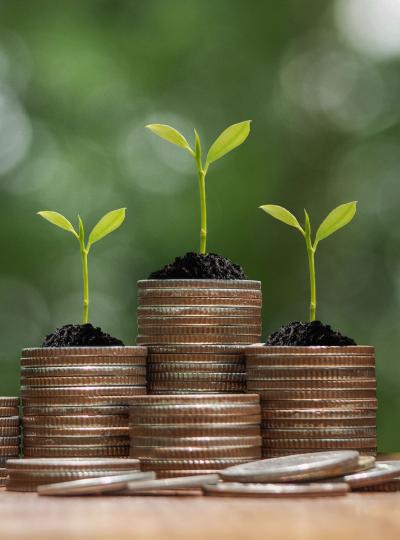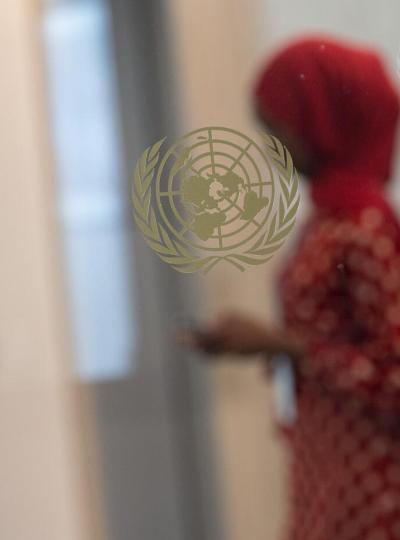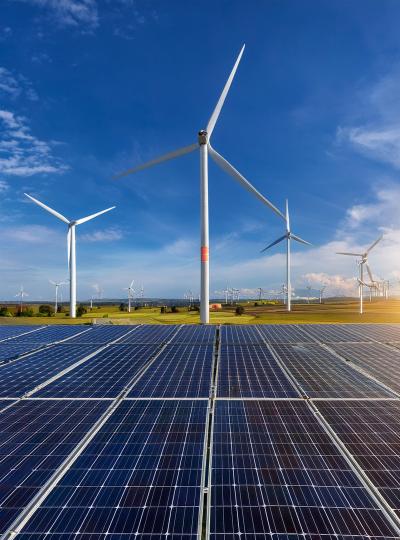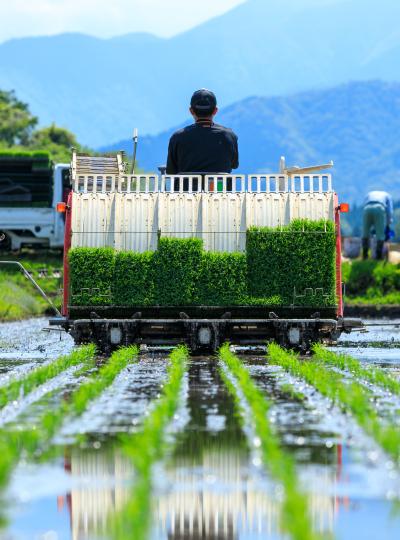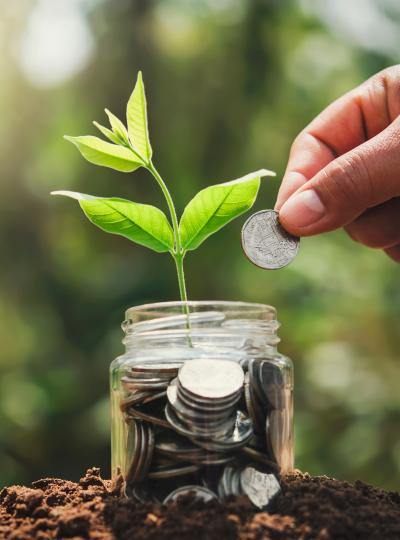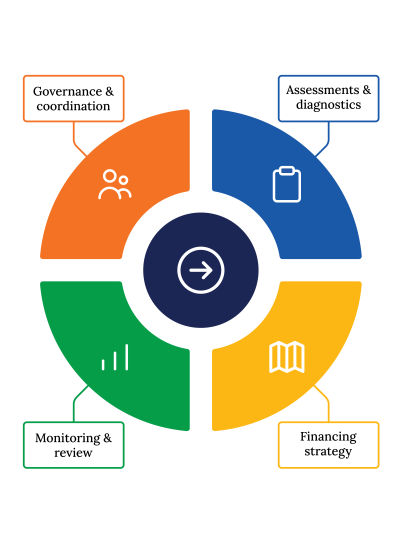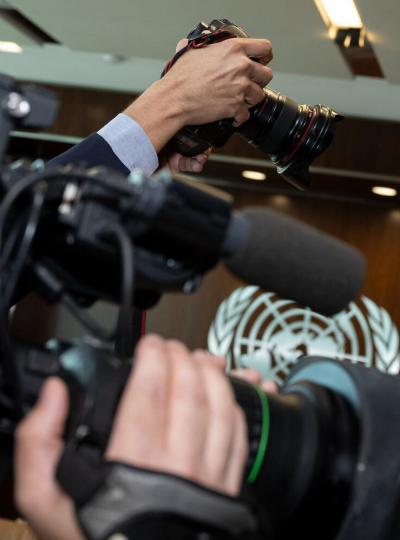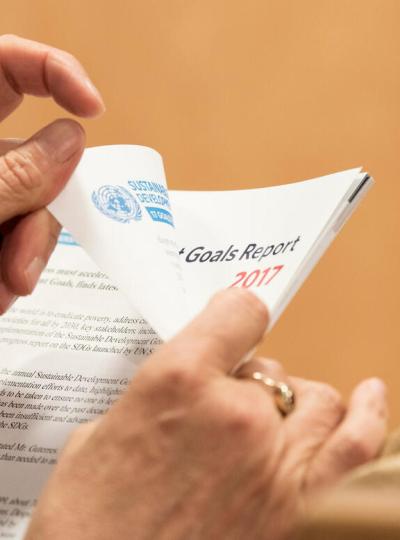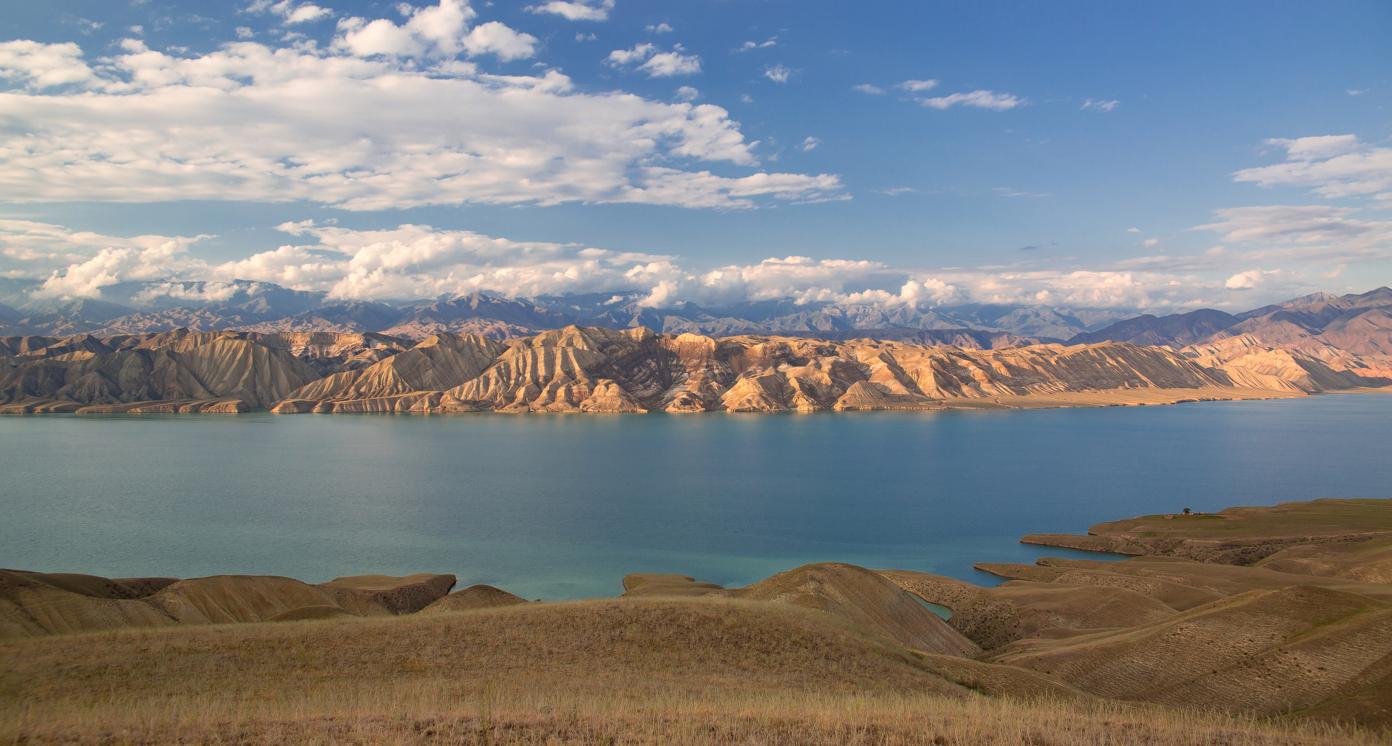Small Hydropower Plants for Independent Power Production (IPP)
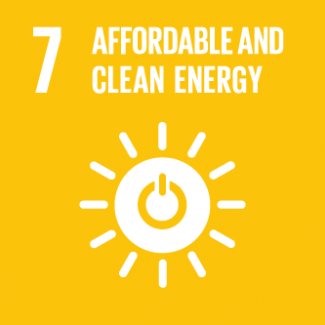
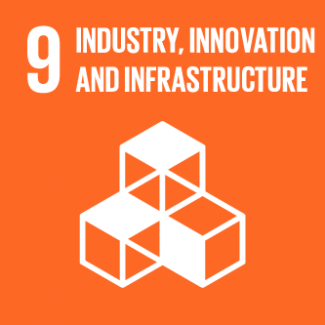
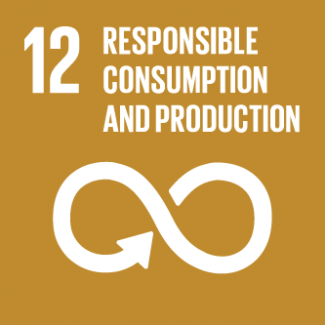
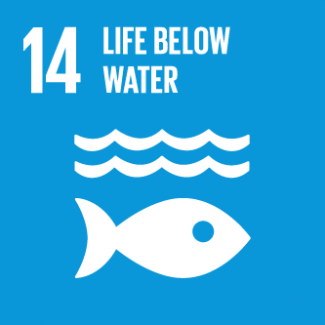
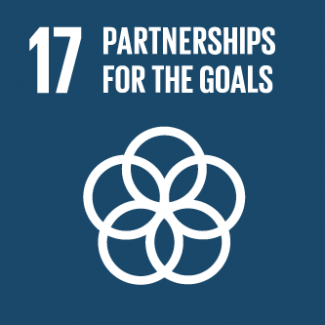
Business Model Description
Design, build and commission a small hydropower plant for independent power production, including individual needs such as production facilities, selling the excess energy to the National Electric Network of Kyrgyzstan to tap into a greater hydropower potential of the country and reduce the load of electricity consumption in the system. Utilize the Power Purchase Agreement (PPA) or Purchase-Sale Agreement (PSA) according to the tariff outlined in Law No. 49 on renewable energy sources to sell the excess energy to the grid.
Expected Impact
Improve energy supply, decrease electricity costs, promote independent energy generation, expand the national grid capacity, mitigating power outages.
How is this information gathered?
Investment opportunities with potential to contribute to sustainable development are based on country-level SDG Investor Maps.
Disclaimer
UNDP, the Private Finance for the SDGs, and their affiliates (collectively “UNDP”) do not seek or solicit investment for programmes, projects, or opportunities described on this site (collectively “Programmes”) or any other Programmes, and nothing on this page should constitute a solicitation for investment. The actors listed on this site are not partners of UNDP, and their inclusion should not be construed as an endorsement or recommendation by UNDP for any relationship or investment.
The descriptions on this page are provided for informational purposes only. Only companies and enterprises that appear under the case study tab have been validated and vetted through UNDP programmes such as the Growth Stage Impact Ventures (GSIV), Business Call to Action (BCtA), or through other UN agencies. Even then, under no circumstances should their appearance on this website be construed as an endorsement for any relationship or investment. UNDP assumes no liability for investment losses directly or indirectly resulting from recommendations made, implied, or inferred by its research. Likewise, UNDP assumes no claim to investment gains directly or indirectly resulting from trading profits, investment management, or advisory fees obtained by following investment recommendations made, implied, or inferred by its research.
Investment involves risk, and all investments should be made with the supervision of a professional investment manager or advisor. The materials on the website are not an offer to sell or a solicitation of an offer to buy any investment, security, or commodity, nor shall any security be offered or sold to any person, in any jurisdiction in which such offer would be unlawful under the securities laws of such jurisdiction.
Country & Regions
- Kyrgyzstan: Osh Oblast
- Kyrgyzstan: Issyk-Kul Oblast
- Kyrgyzstan: Jalal-Abad Oblast
- Kyrgyzstan: Naryn Oblast
- Kyrgyzstan: Talas blast
Sector Classification
Renewable Resources and Alternative Energy
Development need
Growing energy demand, high dependency on hydropower, and low level of gasification of 38% prompt Kyrgyzstan to rely on imported coal and oil for heating and electricity during winter peak. The power sector faces up to 20% of transmission and distribution losses, while power outages affect 60% of the population (1, 2, 3, 4).
Policy priority
The National Development Strategy for 2018-2040 aims to decentralize heating systems and increase gasification in the country, reducing carbon dioxide (CO2) emissions conditionally by 43.62% by 2030 compared to the business-as-usual (BAU) scenario, adopting energy-saving technologies, and transitioning to a sustainable energy system (5, 6).
Gender inequalities and marginalization issues
Disproportionate access to uninterrupted electricity is observed between the regions, with only 62% of the rural population having a stable electricity supply. Women in rural areas are affected the most by power outages as the primary carers for household and older family members (3).
Investment opportunities introduction
The government of Kyrgyzstan seeks to develop cascade hydro schemes, improve the transmission system, projects to improve the strength of the network and the security of supply, and cross-border electrical connection projects such as CAREC. In 2023, the power generation sector attracted USD 313,500 in foreign direct investments (7, 8, 9, 14).
Key bottlenecks introduction
Kyrgyzstan's high vulnerability to climate change renders hydropower, the country's primary source of domestically produced electricity, increasingly unreliable during the winter season.
Alternative Energy
Development need
As of 2021, the development of renewable energy accounts for less than 2% of Kyrgyzstan's overall potential. The country has roughly 30% of Central Asia's hydropower resources on its territory, with hydropower accounting for 90% of its domestic electricity consumption, but utilizes only one-tenth of it (10, 11, 12).
Policy priority
The National Development Strategy for 2018-2040 aims to increase the share of small hydro, solar, wind, and biogas power to 50% in the energy mix by 2040. In Nationally Determined Contributions, Kyrgyzstan pledges to develop wind energy to 3.6K tons of carbon dioxide (CO2) equivalent, solar energy to 13K tons of CO2 equivalent, and biogas power to 1312K tons (5, 6).
Gender inequalities and marginalization issues
The air quality in the rural areas remains affected by the pollution from unclean cooking stoves as in 43% of the rural population utilized solid fuel stoves in 2018, requiring wood or coal for heat. The proportion of the rural population using primarily clean fuels and technologies fell to 2.37% in 2023 (1, 15).
Investment opportunities introduction
The government of the Kyrgyz Republic prioritizes projects in small hydropower, solar, and wind to expand the renewable energy mix. Preferences for investors in electric energy using renewable energy sources are provided by the Tax Code of the Kyrgyz Republic and the customs tariffs of the Eurasian Economic Union (9, 16).
Key bottlenecks introduction
A weak regulatory environment, particularly pertaining to operational Power Purchase Agreements (PPA), can hinder the development of alternative energy sources in Kyrgyzstan (13).
Pipeline Opportunity
Small Hydropower Plants for Independent Power Production (IPP)
Design, build and commission a small hydropower plant for independent power production, including individual needs such as production facilities, selling the excess energy to the National Electric Network of Kyrgyzstan to tap into a greater hydropower potential of the country and reduce the load of electricity consumption in the system. Utilize the Power Purchase Agreement (PPA) or Purchase-Sale Agreement (PSA) according to the tariff outlined in Law No. 49 on renewable energy sources to sell the excess energy to the grid.
Business Case
Market Size and Environment
181,431 MWh annual generation and 63.38 MW installed capacity
The technological hydropower potential is estimated at 142 billion kilowatt-hours (kWh) annually, with an economic or production potential of 60 billion kWh per year (39).
In 2022, 22 small hydropower plants collectively generated 181,431 megawatt-hours (MWh) of electricity in Kyrgyzstan, contributing to a total installed capacity of 63.38 megawatt as part of the country's overall electricity production for the year (40).
In 2023, Kyrgyzstan's rural population was estimated at 4,665,000. In 2022, the per capita electricity consumption reached 2.021 megawatt-hours (MWh). Based on these figures, electricity consumption in rural areas can be approximated at 9,427,965 MWh (41, 42).
Indicative Return
15% - 20%
The National Investments Agency (NIA) under the President of the Kyrgyz Republic identified a small hydropower investment project with a capacity of 7.1 megawatt and an internal rate of return (IRR) of 19.15% over 10 years (19).
Investment Timeframe
Medium Term (5–10 years)
A small hydropower plant in the Chui region with a capacity of 500 kilowatts, which produces energy to power its butter and cheese factory and sells the excess energy to the grid, reports a payback period of 5-10 years (17).
The National Investments Agency (NIA) under the President of the Kyrgyz Republic identified a small hydropower investment project with a payback period of 4.31 years (19).
Ticket Size
USD 1 million - USD 10 million
Market Risks & Scale Obstacles
Capital - Limited Investor Interest
Market - Highly Regulated
Market - Volatile
Impact Case
Sustainable Development Need
Kyrgyzstan’s hydropower potential is estimated at 18.5 kilowatts of capacity and over 142 billion kilowatt-hours of electricity generation, yet only 10% of this potential is used. Less than 3% of Kyrgyzstan’s hydropower potential is of small plants (19, 21).
The population growth pushes electricity demand up, where in 2023, 17.2 billion kilowatt-hours (kWh) were consumed. According to the high electricity demand scenario, the generation needs will reach 17.4 billion kWh by 2025 and 20.1 billion kWh by 2030 (11, 22).
In 2023, Kyrgyzstan imported 3.5 billion kilowatt-hours of electricity, representing 20% of the country's total consumption for the year, with an estimated cost of approximately USD 962.5 million, based on 2021 energy import figures (22, 48).
Kyrgyzstan generates 51 billion m3 of water annually, consuming 12 billion internally and sharing 39 billion with neighbours. High irrigation needs in summer deplete water for winter power generation, while climate change and inefficiencies worsen shortages for large hydropower plants (49, 50).
Gender & Marginalisation
Almost 31% of the rural population experienced electricity outages once a month compared to only 8% of the urban population in 2021 (3).
A significant gender gap persists in energy sector training. In secondary and higher vocational institutions offering "Electric and Thermal Power Engineering," women comprise just 3.3% of students, while men account for 96.7% (16).
Expected Development Outcome
Small hydropower enables diversification of the country's energy mix towards more sustainable options while maximizing the utilization of its hydroelectric potential.
Small hydropower plants reduce the strain of increasing electricity demand and associated costs on the population by providing autonomous energy solutions for businesses and decreases the pressure on depleting water resources.
Small hydropower plants reduce reliance on imported electricity by enhancing the country's domestic energy capacity.
Gender & Marginalisation
Small hydropower plants designed for individual use mitigate the frequency of power outages in rural areas by enabling reliance on autonomous off-grid energy generation.
Primary SDGs addressed

7.1.1 Proportion of population with access to electricity
7.2.1 Renewable energy share in the total final energy consumption
73.21% in 2023 (23).
The share of renewable energy sources in total energy consumption amounted to 30% in 2022 but the share of electricity generation by power plants using renewable energy sources from total generation was only 1.28% (16, 24).
89.03% by 2028 (16).
The share of electricity generation by power plants using renewable energy sources from total generation is targeted to reach 18.81% by 2028 (16).

9.4.1 CO2 emission per unit of value added
9,449,100 tons in 2017 (25).

12.a.1 Installed renewable energy-generating capacity in developing countries (in watts per capita)
Secondary SDGs addressed


Directly impacted stakeholders
People
Gender inequality and/or marginalization
Planet
Corporates
Public sector
Indirectly impacted stakeholders
People
Gender inequality and/or marginalization
Outcome Risks
Hydropower projects are known to affect the migration patterns of water animals; particularly hydropower dams obstruct the flow of rivers (43).
If the irrigation needs of the agricultural producers are not considered, the construction of new hydropower plants can negatively impact the access to water resources in the region (51).
Impact Risks
If small hydropower plants are built in seismically active areas, landslides and mudflows can occur, lowering the impact of the small hydropower development.
Building small hydropower plants in the mountains with weaker water flow and higher ground level differences may affect the power generation capacity and lower impact of small hydropower.
Impact Classification
What
Small hydropower plants reduce electricity costs, enhance income generation from energy sales to the grid, expand the national grid capacity, and reduce power outages.
Who
Employees of the small hydropower plants, businesses in agriculture and industry, the general population, the environment, and the public sector benefit from improved clean energy supply.
Risk
Seismic activity and natural hazards alongside weaker water flow and restrictive topography may hinder the impact of small hydropower plants.
Contribution
Small hydropower improves energy supply in the North, addressing higher needs where large hydropower is absent and diversifies water intake compared to large hydropower reservoirs (40).
How Much
Small hydropower plants will save up to 49.8 MT of carbon dioxide by 2030. Between 2023-2040, the cost of hydropower electricity may drop from USD71.1 to USD45.9 per megawatt-hour (6, 26).
Impact Thesis
Improve energy supply, decrease electricity costs, promote independent energy generation, expand the national grid capacity, mitigating power outages.
Enabling Environment
Policy Environment
Nationally Determined Contributions, 2021: sets a goal for power generation at existing private small hydropower plants, reducing 2737 tons of carbon dioxide (CO2) eq. until 2030 and construction and launch of new small hydropower plants, reducing 49,796,000 tons of CO2 eq. until 2030 (6).
Master Plan for Complex Development of the Energy Sector of the Kyrgyz Republic, 2022: recommends a set of measures to improve the power system, particularly, small hydropower plants are recommended to be included in the Generation Expansion Plan due to their low levelized cost of electricity (11).
The Project of the Program for the Development of a Green Economy in the Kyrgyz Republic for 2024-2028: sets out to assist in reducing investment risks related to green energy through public-private partnerships agreements (PPP) and improved standard power purchase agreements (PPA) (16).
National Development Programme until 2026, 2021: highlights the necessity to launch small hydropower plants with government purchase of electricity from small- and medium-sized producers at attractive tariffs, enabling commission facilities with a total capacity of 300-400 megawatt (27).
National Development Strategy for 2018-2040, 2018: sets an objective for Kyrgyzstan to become a major electricity producer in the region with a 50% share of environmentally friendly energy sources, including small hydropower (5).
Financial Environment
Financial incentives: Hungarian-, Russian-, and Uzbek-Kyrgyz development funds offer preferential loans up to USD 25 million at 1.5-7.25% for energy sector companies. The Green Energy Fund provides KGS 5 million (USD 57,175) guarantees for small hydropower companies (31, 32, 33, 34).
According to Article 239 of the tax code of the Kyrgyz Republic, new producers of electric energy using renewable energy sources within 5 years from the date of commissioning of power plant facilities receive income tax incentives (35).
Regulatory Environment
Law No. 49 On renewable energy sources, 2022: establishes the implementation of a guaranteed buyout of electrical energy from hydropower, applying a coefficient of 1.3 to all tariffs. A grace period for projects using water energy is 15 years (28).
Law No. 8 On electricity, 1997: stipulates that legal entities or individuals producing electric energy using renewable energy sources do not need licensing to produce, transmit, distribute, sell, export or import electricity (29).
Law No. 66 On investments, 2003: establishes the basic principles of the state investment policy, providing fair, equal legal treatment to investors and guaranteeing the protection of their investments in the economy of the Kyrgyz Republic (30).
Marketplace Participants
Private Sector
JSC Incraft, LCC Tegirmentinskaya HPP, 40 Capital, JSC Kalininskaya HPP, ARK Construction Company LLC.
Government
Ministry of Energy, Ministry of Economy and Commerce, National Investments Agency under the President of the Kyrgyz Republic, PPP Center, National Electricity Network of the Kyrgyzstan (NESK), Green Energy Fund.
Multilaterals
Asian Development Bank (ADB), European Bank for Reconstruction and Development (EBRD), United Nations Development Programme (UNDP), World Bank, Delegation of the European Union to the Kyrgyz Republic, Asian Infrastructure Investment Bank (AIIB).
Non-Profit
Renewable Energy Association (Association "VIE KR").
Public-Private Partnership
In 2024, OJSC Chakan HPP, a state-owned energy company, and LLC "Joint Kyrgyz-Chinese Society for the Construction of Hydropower" signed the first public-private partnership to construct a 25-megawatt small hydropower plant valued at USD27 million (36).
Target Locations
Kyrgyzstan: Osh Oblast
Kyrgyzstan: Issyk-Kul Oblast
Kyrgyzstan: Jalal-Abad Oblast
Kyrgyzstan: Naryn Oblast
Kyrgyzstan: Talas blast
References
- (1) UN ESCAP. 2022. SDG 7 Roadmap for Kyrgyzstan. https://www.unescap.org/sites/default/d8files/knowledge-products/SDG7%20Roadmap%20for%20Kyrgystan_FINAL-temp%20%282%29.pdf
- (2) OECD. 2019. Sustainable Infrastructure for Low-Carbon Development in Central Asia and the Caucasus. https://unece.org/sites/default/files/2022-09/ece.nicosia.conf_.2022.inf_.10.pdf
- (3) UN Women. 2023. Sustainable Development Goals and Gender in Kyrgyzstan. https://data.unwomen.org/sites/default/files/documents/Publications/2023/Kyrgyz-SDG-gender.pdf
- (4) Ministry of Economy and Commerce. 2023. Policy brief: Heating. https://mineconom.gov.kg/froala/uploads/file/3b5ebd51d9460a62bfe760d54f9188756cf2e50b.pdf
- (5) The Government of the Kyrgyz Republic. 2018. National Development Strategy of the Kyrgyz Republic for 2018-2040. https://www.fao.org/faolex/results/details/en/c/LEX-FAOC203822/
- (6) State Committee on Ecology and Climate. 2021. Updated Nationally Determined Contributions. https://unfccc.int/sites/default/files/NDC/2022-06/%D0%9E%D0%9D%D0%A3%D0%92%20%D0%A0%D0%A3%D0%A1%20%D0%BE%D1%82%2008102021.pdf
- (7) Cabinet of Ministers of the Kyrgyz Republic. 2022. Resolution of July 30, 2022 No. 352 On approval of the Program for attracting investments to the Kyrgyz Republic for 2022-2026 https://invest.gov.kg/wp-content/uploads/2023/03/Программа-по-привлечению-инвестиций-в-Кыргызскую-Республику-на-2022-2026-годы.pdf
- (8) National Investments Agency under the President of the Kyrgyz Republic. 2019. Kyrgyz Republic. Industry Overview: Energy (Hydro, Solar, Wind, Bio). https://invest.gov.kg/wp-content/uploads/2019/07/Factsheet-2-Energy-Rus.pdf
- (9) National Investments Agency under the President of the Kyrgyz Republic. 2022. Priority Investment Projects of the Kyrgyz Republic. https://invest.gov.kg/wp-content/uploads/2022/09/Крупные-проекты-КР-англ.pdf
- (10) National Investments Agency under the President of the Kyrgyz Republic. 2022. Construction project of frame high-rise grid solar power plants. https://invest.gov.kg/wp-content/uploads/2021/12/27.pdf
- (11) CESI, ADB, the Ministry of Economy and Commerce. 2022. The Master Plan for the Integrated Development of the Energy Strategy of the Kyrgyz Republic. https://minenergo.gov.kg/media/uploads/2022/12/07/mp-kr-finalreport-rev5_v2_ru_website_YHP6v2s.pdf
- (12) National Investments Agency under the President of the Kyrgyz Republic. 2022. Key Industries. Hydro energy. https://invest.gov.kg/about-kyrgyz-republic/key-industries/
- (13) Stakeholder consultations with EBRD. September 2024.
- (14) National Statistical Committee of the Kyrgyz Republic. 2023. Foreign Direct Investments in 2023. https://stat.gov.kg/ru/statistics/download/operational/1763/
- (15) Национальный статистический комитет Кыргызской Республики. 2023. Доля населения, использующего в основном чистые виды топлива и технологии. https://sustainabledevelopment-kyrgyzstan.github.io/7-1-2/
- (16) Министерство Экономики и Коммерции. 2024. Программа развития зеленой экономики в Кыргызской Республике на 2024-2028 годы (Проект). https://mineconom.gov.kg/froala/uploads/file/3bd5db922cf87fc28a0f3cbeced8e2bbe286956c.pdf
- (17) Stakeholder consultations with a private company in renewable energy. October, 2024.
- (18) Kaktus Media. 2017. В Кыргызстане открылась Тегирментинская малая ГЭС. Что получит страна? https://kaktus.media/doc/352657_v_kyrgyzstane_otkrylas_tegirmentinskaia_malaia_ges._chto_polychit_strana.html
- (19) National Investments Agency under the President of the Kyrgyz Republic. 2022. Construction project of small hydropower plant in Chon-Kemin. https://invest.gov.kg/wp-content/uploads/2021/12/43-1.pdf
- (20) Stakeholder consultation with a private company operating in hydropower. September 2024.
- (21) Opitz-Stapleton S. et al. 2022. Understanding the climate and net-zero transition risks and opportunities in Kyrgyzstan. https://media.odi.org/documents/ODI_Understanding_net-zero_transition_risks_Kyrgyzstan.pdf
- (22) National Statistical Committee of the Kyrgyz Republic. 2024. Electricity production and distribution in 2023. https://stat.gov.kg/ru/news/proizvodstvo-i-raspredelenie-elektroenergii-v-2023-godu/
- (23) National Statistical Committee of the Kyrgyz Republic. 2023. Sustainable Development Goals in the Kyrgyz Republic. https://sustainabledevelopment-kyrgyzstan.github.io/7-1-1/
- (24) National Statistical Committee of the Kyrgyz Republic. 2023. Sustainable Development Goals in the Kyrgyz Republic. https://sustainabledevelopment-kyrgyzstan.github.io/7-2-1-1/
- (25) National Statistical Committee of the Kyrgyz Republic. 2023. Sustainable Development Goals in the Kyrgyz Republic. https://sustainabledevelopment-kyrgyzstan.github.io/9-4-1/
- (26) Министерство экономики Кыргызской Республики, GIZ. 2023. Аналитическая записка "Сравнение вариантов генерации электрической энергии". https://mineconom.gov.kg/froala/uploads/file/3f86588b07932054f682750e2324daedf6472238.pdf
- (27) Кабинет Министров Кыргызской Республики. 2021. Национальная программа развития Кыргызской Республики до 2026 года. https://faolex.fao.org/docs/pdf/kyr208595.pdf
- (28) Правительство Кыргызской Республики. 2022. Закон Кыргызской Республики от 30 июня 2022 года №49 О возобновляемых источниках энергии. https://cbd.minjust.gov.kg/112382/edition/16959/ru
- (29) Правительство Кыргызской Республики. 1997, Закон Кыргызской Ресублики от 28 января 1997 года №8 Об электроэнергетике. https://cbd.minjust.gov.kg/508/edition/1268359/ru
- (30) Правительство Кыргызской Республики. 2003. Закон Кыргызской Республики от 27 марта 2003 года №66 Об инвестициях в Кыргызской Республике. https://cbd.minjust.gov.kg/1190/edition/8226/ru
- (31) Russian-Kyrgyz Development Fund. 2022. Direct crediting. https://www.rkdf.org/kreditovanie/
- (32) Hungary-Kyrgyz Development Fund. 2024. Terms of financing of the VKFR. https://hkdf.kg/frontend/web/application/index
- (33) Uzbek-Kyrgyz Development Fund. 2022. Investment credit. https://uk-df.org/?page_id=368
- (34) Stakeholder consultation with Green Energy Fund. September 2024.
- (35) Правительство Кыргызской Республики. 2022. Налоговый Кодекс Кыргызской Республики. https://cbd.minjust.gov.kg/112340/edition/13809/ru?anchor=st_239
- (36) PPP Center. 2024. Подписан первый проект ГЧП по строительству малой гидроэлектростанции мощностью 25 МВТ. https://ppp.gov.kg/tpost/lild7h9981-podpisan-pervii-proekt-gchp-po-stroitels "37) Всемирный банк, Глобальная практика в области энергетики и добывающих отраслей. 2017. Малые ГЭС в Кыргызской Республике: Оценка потенциала и сложностей развития. https://documents1.worldbank.org/curated/en/824791513353974398/pdf/116656-RUSSIAN-WP-PUBLIC-FinalreportSHPPDevelopmentinKYRRusSept.pdf"
- (38) Национальный стастистический коммитет. 2023. Доля населения, имеющего доступ к электроэнергии (показатель 7.1.1). https://sustainabledevelopment-kyrgyzstan.github.io/7-1-1/
- (39) National Investments Agency under the President. 2024. About Kyrgyz Republic - Key industries. https://invest.gov.kg/about-kyrgyz-republic/key-industries/ "40) Sustainable Energy Connectivity in Central Asia (SECCA). 2023. Технические семинары: Практические аспекты развития устойчивой энергетики в Кыргызстане. Малая гидроэнергетика Кыргызстана – состояние и перспективы развития. https://secca.eu/wp-content/uploads/2023/09/1_Kazakova.pdf"
- (41) Национальный статистический комитет Кыргызской Республики. 2024. Численность населения областей, районов, городов, поселков городского типа Кыргызской Республики в 2023 г. https://stat.gov.kg/en/statistics/download/operational/769/
- (42) International Energy Agency. 2022. Electricity. Per-capita electricity consumption. https://www.iea.org/countries/kyrgyzstan/electricity
- (43) Cafasso S. 2020. Hydropower dams threaten fish habitats worldwide. https://sustainability.stanford.edu/news/hydropower-dams-threaten-fish-habitats-worldwide
- (44) Национальный статистический комитет Кыргызской Республики. 2023. Доля населения, испольузующего в основном чистые виды топлива и технологии (показатель 7.1.2). https://sustainabledevelopment-kyrgyzstan.github.io/7-1-2/
- (45) Национальный статистический комитет Кыргызской Республики. Институт статистических исследований и повышения квалификации. 2020. Аналитическая записка. Особенности и перспективы развития сельского хозяйства Кыргызской Республики. https://stat.gov.kg/media/files/67cd4b04-154b-473c-9556-534d36e630b5.doc
- (46) National Statistical Committee of the Kyrgyz Republic. 2021. Share of average energy costs per capita. https://stat.gov.kg/en/opendata/category/125/
- (47) Kaktus media. 2024. В Кыргызстане добыли рекордное количество угля в 2023. https://kaktus.media/doc/500916_v_kyrgyzstane_dobyli_rekordnoe_kolichestvo_yglia_v_2023_gody.html
- (48) UNECE. 2024. Energy Policy Brief: Kyrgyzstan. https://unece.org/sites/default/files/2024-09/kyrgyzstans%20%287%29.pdf "49) Радио Азаттык. 2024. Время запасаться водой. Как Кыргызстан намерен решить проблему дефицита влаги и развивать гидроэнергетику. yk.org/a/32788086.html "
- (50) Департамент водного хозяйства Кыргызской Республики. 2023. Водный кризис не обойдет Кыргызстан стороной. Как можно предотвратить проблему дефицита воды. https://water.gov.kg/index.php?option=com_k2&view=item&id=2287:vodnyj-krizis-ne-obojdet-kyrgyzstan-storonoj-kak-mozhno-predotvratit-problemu-defitsita-vody&Itemid=1437&lang=ru
- (51) Zeng R. et al. 2017. Hydropower versus irrigation - an analysis of global patterns. https://iopscience.iop.org/article/10.1088/1748-9326/aa5f3f

